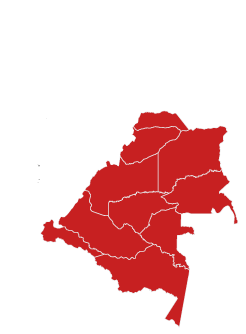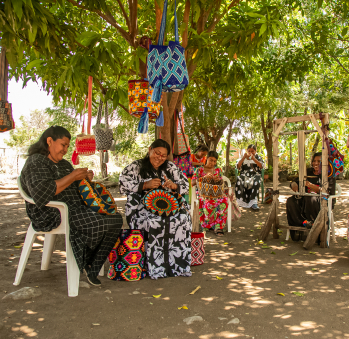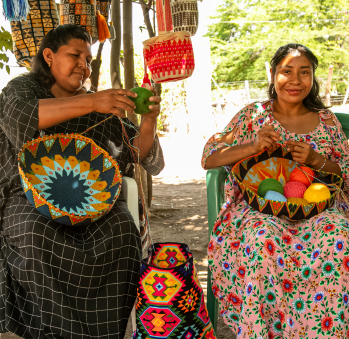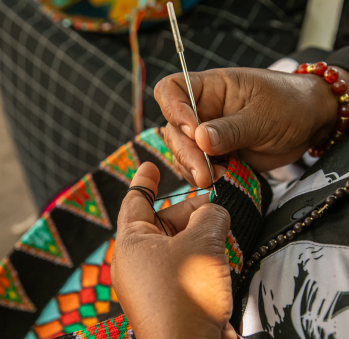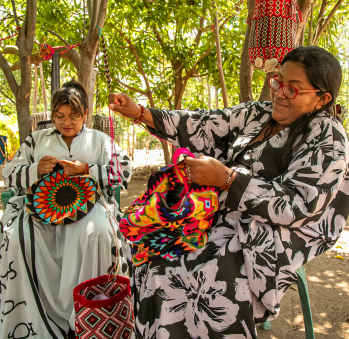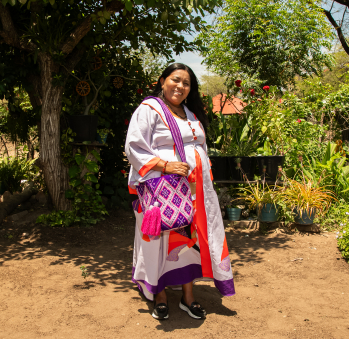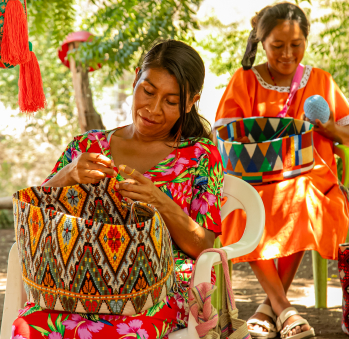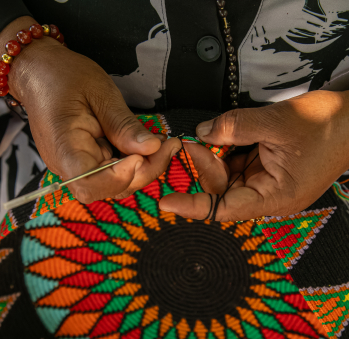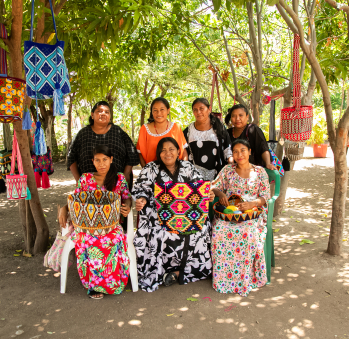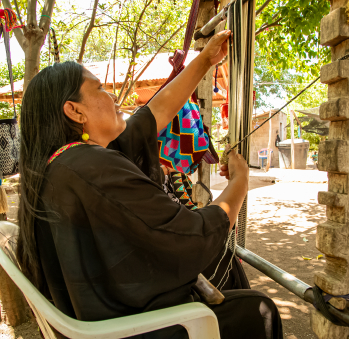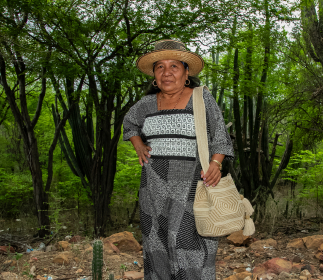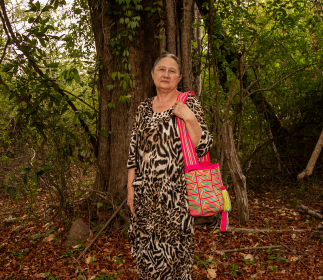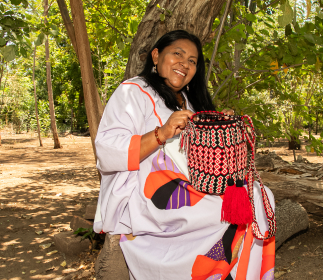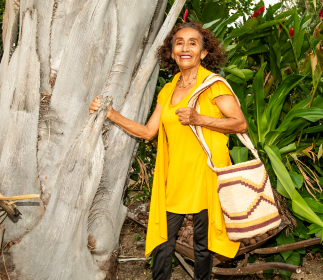Alexandra Fernandez
Workshop: Jorrorocheli
Craft: Weaving
Trail: Riohacha - San Juan del Cesar Route
Location: Fonseca, La Guajira
SCHEDULE YOUR VISIT
Comunidad Mayalita, Fonseca, La Guajira
3135527183
alexqdra.75@gmail.com
Alexandra introduces herself, enunciating her name clearly and loudly, then proceeds to mention her affiliation with the Uriana Clan, meaning that her family embodies the nature of both the rabbit and the tiger. The cunning, malicious rabbit, with its swift thinking, is complemented by the ferocity and strength of the feline. As she recounts this, it becomes evident she finds amusement in identifying herself as somewhat suspicious, like the rabbit, yet she recognizes herself in all the characteristics of these legendary and wise animals, devoutly believed in by her people.
She also identifies as Wayuu, but from a different world, the Southern Guajira, a place not widely known or imagined to be so different from the common perception of this supposedly desert territory. She speaks of the trees of Fonseca and their lushness, of rivers and water, which are scarce in the rest of the department. Additionally, she notes as a curiosity, because it is one, that her municipality has constant electricity, although she specifies that this isn’t the case just outside the urban area, in her reserve territory, barely twenty minutes away.
Alexandra speaks about her region because people don’t usually associate the southern part of the department with craftsmanship. Instead, it’s known as a land of singers, sung about, for example, by the Zuleta Brothers, who pay homage to the distinguished musicians Luis Pitre and Carlos Huertas, and speak of Fonseca as a place where accordions weep and laugh. Furthermore, because the Festival del Retorno has become famous there, a celebration of a Fonsequero’s return home. For all these reasons, Alexandra’s task has been to make the Wayuu ancestry visible, even on this side of Guajira. It hasn’t been easy, but, as a good indigenous woman, she’s up to the challenge.
That’s why she asked for assistance at Sena to improve the processes of the 200 artisans in the territory, whom she decided to gather from all the surrounding villages. There, they learned to better combine colors, to achieve good finishes, and to embroider. Then, the same happened with Artesanías de Colombia, and through consistent work, her people were invited to participate in a project involving 20 communities. She knows this will give her and her colleagues autonomy, because, ultimately, what they seek most is for their children to have the opportunities for a better tomorrow.
And when she says this, she recalls how the rhythms of weaving are accelerated depending on the needs. She knows she did something unusual when she finished a big bag in 22 days that normally takes a month and a half to weave. It was for her son’s uniform, and for buying more threads. “We do it for our children, so they can study.” In this way, these women know what they can produce and can calculate their speed and allocate the time they need. They also know that for it to be worthwhile, the night is better, because the day is for household chores or fetching water, two or three hours concentrated on making the backgrounds of the backpacks without anyone bothering them.
Weaving is their knowledge, their Wayuu identity, and Alexandra knows she has work ahead: letting the world know that there are also weaving hands, willing to tell us their story, in Southern Guajira. Through her Association Korrolochen, which means accessory in Wayunaiki, she and 76 other women have been trying to enter the market since May 2014 by weaving bags and making hammocks. For this purpose, she invites us to her reserve, Mayabangloma, comprising the villages Mayalita, Bangañita, La Gloria, and La Loma. In Mayalita, where she lives, she cooks iguana, something unique to the region.
Craft
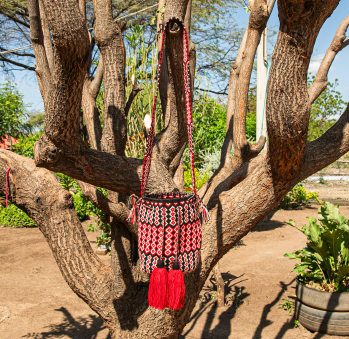
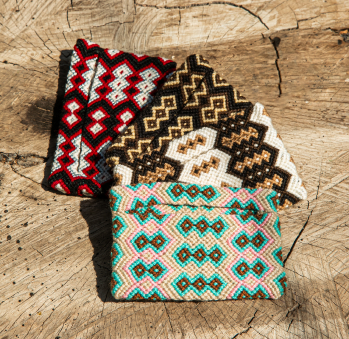
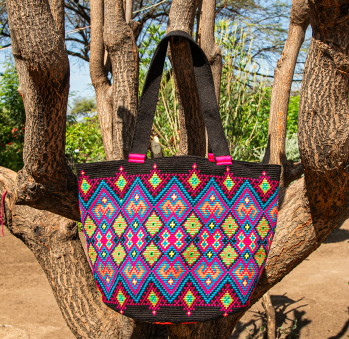
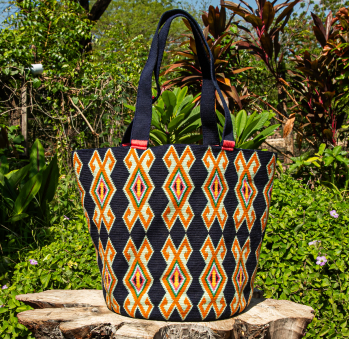
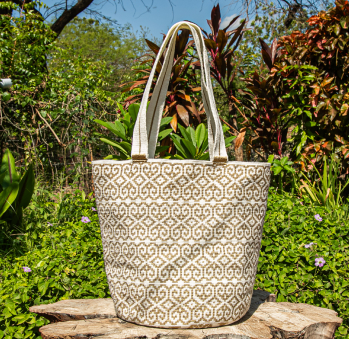
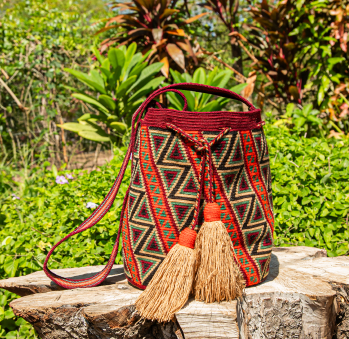
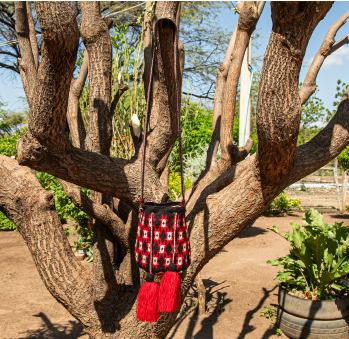
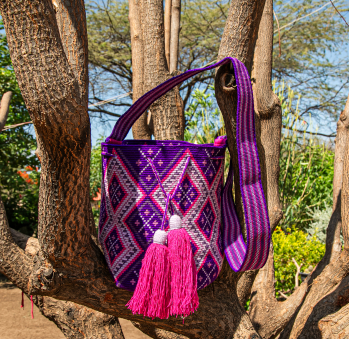
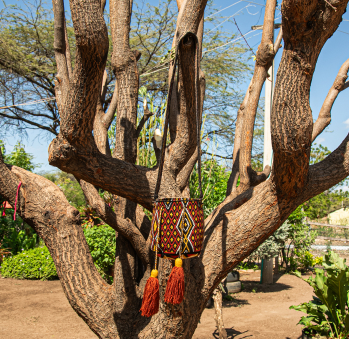
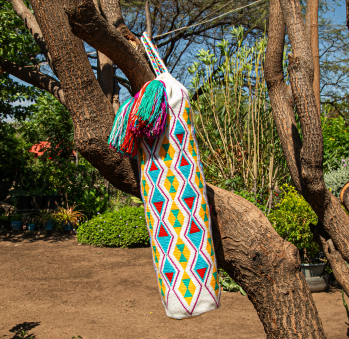










Artisans along the way
Artisans along the way
No puede copiar contenido de esta página

